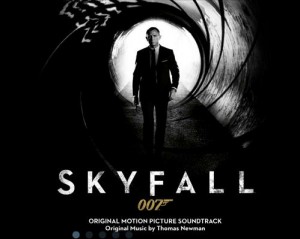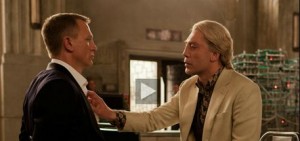Specialist Dental Group has launched an on-going series of blog posts by our individual dental specialists. All views provided are the dentist’s own opinions and are posted on this blog as part of our on-going efforts to educate the public about dental issues and other matters of interest relating to dentistry and healthcare.
 It was on a wonderful Friday night, on the lap of with my mother, that I was introduced to the idea of the British secret service. My mother’s younger brother, uncle BW, was a big fan of the 007 series, and I believe my childhood had officially retired the moment I started watching the movie ‘Dr No’ starring Sean Connery and Ursula Andress.
It was on a wonderful Friday night, on the lap of with my mother, that I was introduced to the idea of the British secret service. My mother’s younger brother, uncle BW, was a big fan of the 007 series, and I believe my childhood had officially retired the moment I started watching the movie ‘Dr No’ starring Sean Connery and Ursula Andress.
For the first time, I noticed the importance of world peace, out-of this-world gadgets, fast cars, and exceptional beauties. Noting the mortality rate of the actors and actresses in that movie, I also concluded that it was better to live in my little normal world since a career in the secret service was probably too risky for my mother’s taste. Since that time, I would not miss any 007 movies.
Over the weekend, my sweet wife decided to give me a treat of 007 and we went for a late night show of the latest James Bond movie, Skyfall. Daniel Craig faired well as 007, but in my opinion, Sean Connery, at 32 years of age, was the ‘real’ 007.
 As usual, the bad guy was tracked down by 007 after a lot of work (and some women), this time the bad guy was an ex-agent of MI6. He became a bad guy after he was captured by the enemies. In order to stay loyal, he attempted suicide by swallowing a cyanide pill that was hidden inside his back tooth (now that raised my interest even more). Somehow he survived the pill but the acidity of the pill destroyed his mouth instead. In the movie, he showed M (and the audience) the damage by removing his upper teeth and his face dramatically sunk in. That is what in the ‘Glossary of Prosthodontics terms’ is called an obturator dental prosthesis.
As usual, the bad guy was tracked down by 007 after a lot of work (and some women), this time the bad guy was an ex-agent of MI6. He became a bad guy after he was captured by the enemies. In order to stay loyal, he attempted suicide by swallowing a cyanide pill that was hidden inside his back tooth (now that raised my interest even more). Somehow he survived the pill but the acidity of the pill destroyed his mouth instead. In the movie, he showed M (and the audience) the damage by removing his upper teeth and his face dramatically sunk in. That is what in the ‘Glossary of Prosthodontics terms’ is called an obturator dental prosthesis.
…Well, enough of spoiling the plot for those who has yet watched the movie.
Now, let us talk a little about the technical stuff. An obturator prosthesis is used for upper jaw defects. It is supposed to replace the missing dentition as well as the missing upper jaw and facial bones. As a maxillofacial prosthodontist, I can tell you that in order to fabricate such prostheses, a very detailed 3-dimensional impression of the upper jaw and facial bone is needed. In many cases, dental implants are needed and that increases its complexity too.
Maxillofacial prosthodontics is a highly specialised, demanding area and currently requires an additional 4 years of full-time training in a major centre after dental school in order to be considered educationally qualified to do such job. In addition, a few more examinations are needed to be considered specialty board certified. It is my estimation that no more than 25 of such specialists are trained in the US annually.
For the first time, I wish the MI6 people emailed me before they deployed 007. I could have easily given MI6 a list of my colleagues who are capable of doing such a rehabilitation job and MI6 could have tracked down the villain as a result. That would have spared my dear 007 from running around the world to catch the villain and that stunning beauty would not be shot in the process! (I promise I will not spoil the plot anymore)
In the last few days, I treated 5 international patients with similar treatment needs from Indonesia, India, Bangladesh, China and Russia but I am 100% sure they are good people. After all, we are lucky that villains only exist in 007 movies. Let us keep it that way.

Dr. Ansgar C. Cheng is a Dental Specialist in Prosthodontics (Teeth Replacement) with Specialist Dental Group. He is also an Adjunct Associate Professor with the National University of Singapore. He has a special interest in dental implants, cosmetic dentistry and treatment of medically compromised patients, including cancer patients.





